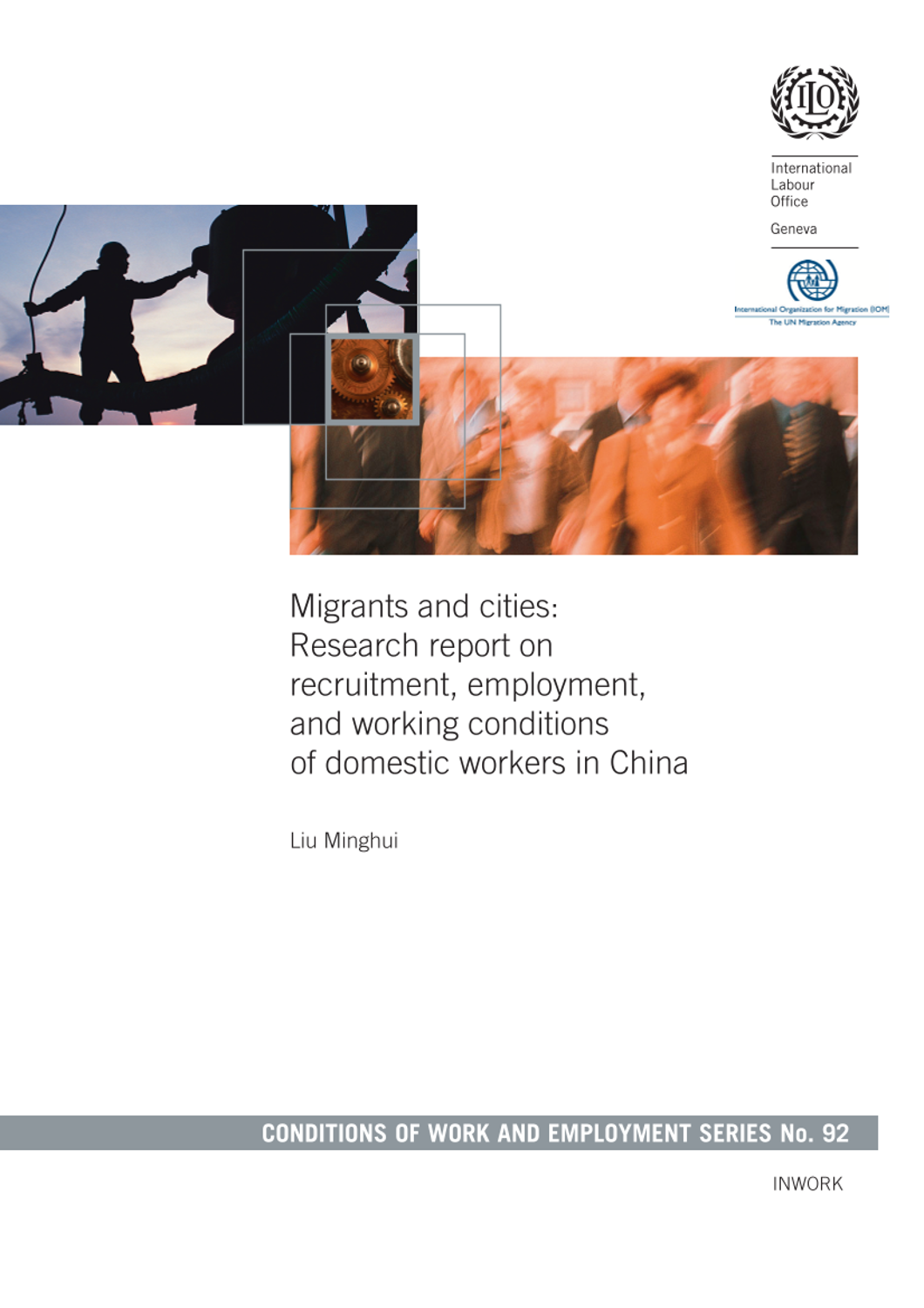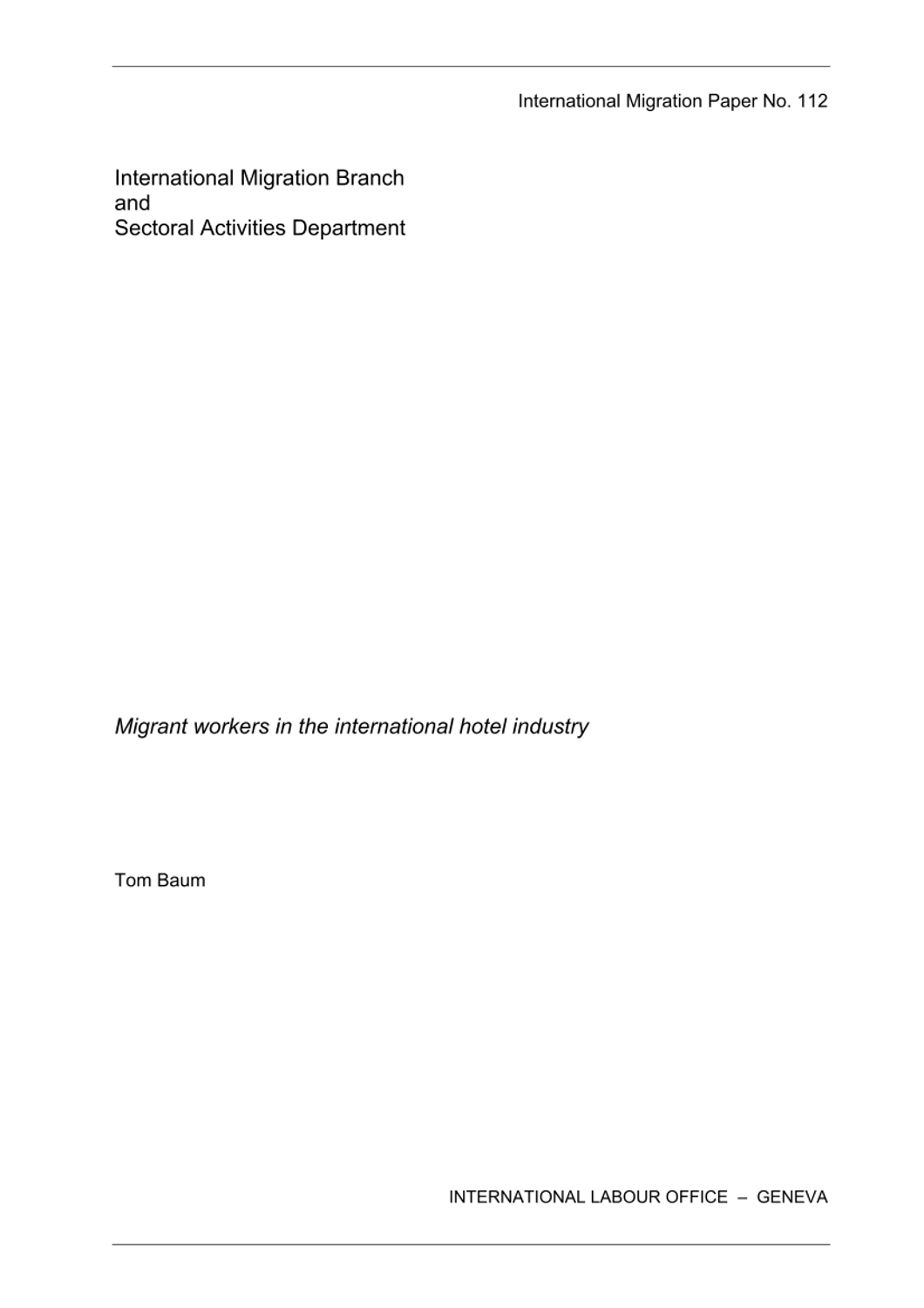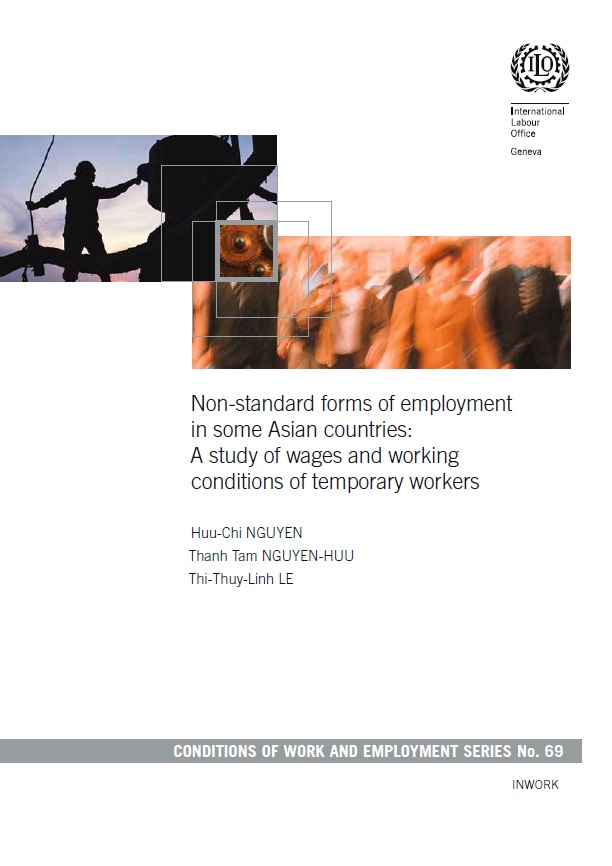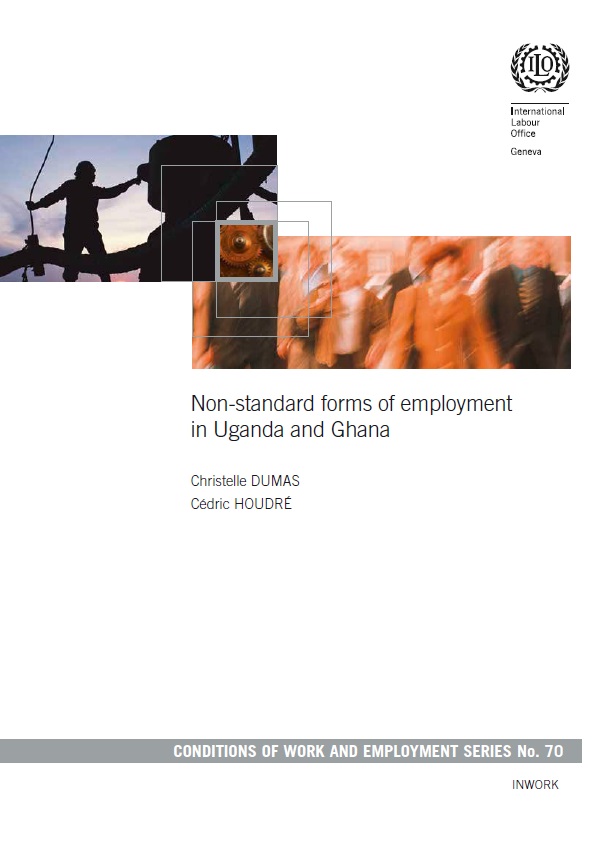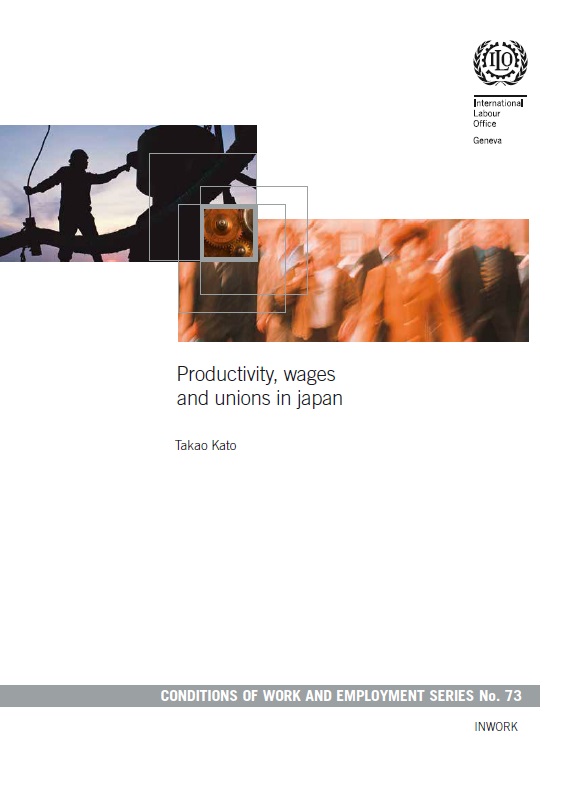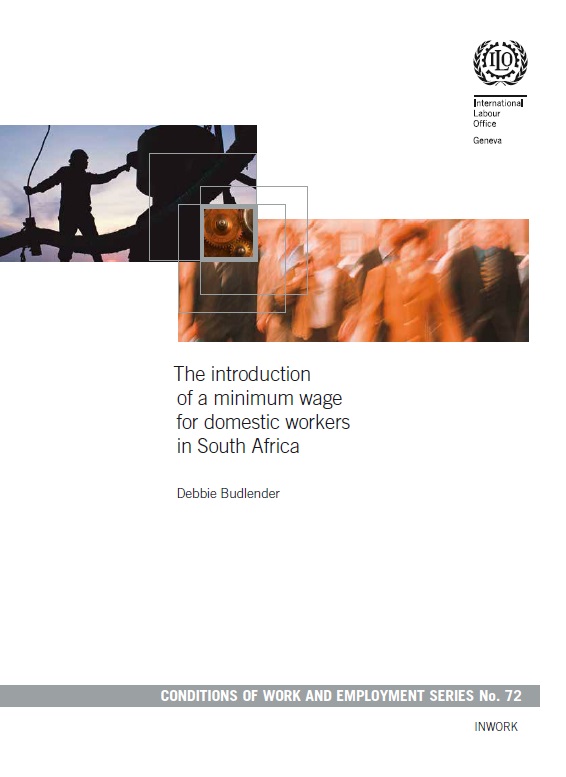연구보고서Conditions of Work and Employment Series 92
Migrant and cities: research report on recruitment, employment, and working conditions of domestic workers in China
- 청구기호
- CWES 92
- 발행사항
- Geneva : ILO, 2017
- 형태사항
- 90 p. :. PDF file ;. 2,037 KB
- 바로가기
소장정보
| 위치 | 등록번호 | 청구기호 / 출력 | 상태 | 반납예정일 |
|---|---|---|---|---|
이용 가능 (1) | ||||
| E0002637 | 대출가능 | - | ||
이용 가능 (1)
- 등록번호
- E0002637
- 상태/반납예정일
- 대출가능
- -
- 위치/청구기호(출력)
책 소개
This study on domestic workers in China was conducted under the EU–China Dialogue on Migration and Mobility Support Project, a collaboration between the International Organization for Migration and the International Labour Organization, funded by the European Union. It examines the current situation of domestic workers in China with a focus on the case study of Beijing, including domestic workers’ recruitment, employment, working conditions, social security, accessibility to legal protection, and complaint mechanisms. The study identifies the gaps in the national policies and practices concerning domestic workers in China in light of international standards and good practices.
In addition, the study provides relevant policy recommendations to narrow the gaps with regard to international instruments and to promote the legitimate rights of domestic workers in China. The study is not only an illustration of the socioeconomic impact of migration on development – and urbanization in particular. It is an expression of hope that domestic work may transition from the informal to the formal economy and become a fully-fledged urban labour market in its own right in China’s near future.
목차
Preface ii
Abbreviations and acronyms vi
List of tables vii
Acknowledgements 1
Executive summary 2
Ⅰ. There is a relatively large gap between current Chinese legislation regarding domestic
workers and the provisions contained within Convention No. 189 2
Ⅱ. The need for government to formulate specific labour protection
standards for domestic workers 3
Ⅲ. Good practices for promoting the urban integration of and decent work
for domestic workers 4
Chapter 1. Introduction 5
1.1. Background and literature review 5
1.2. Research objectives and scope 8
1.3. Research methodology 8
1.3.1. Literature review 8
1.3.2. Empirical research 8
1.3.2.1. Focus group discussions 8
1.3.2.2. Questionnaire survey 10
1.3.2.3. Field observations and in-depth interviews 10
Chapter 2. Overview of the domestic service sector in China 12
2.1. Scale of domestic service enterprises 12
2.2. Operation and management models of domestic service enterprises 13
2.2.1. Employee system 13
2.2.2. Intermediary system 13
2.2.3. Hybrid system 13
2.2.4. Membership system 14
2.2.5. Social insurance and domestic service enterprises 14
2.3. The economic importance of domestic services on macro Level 15
2.4. The economic importance of domestic services on micro level 16
Chapter 3. Legal framework of internal migration and domestic service 17
3.1. Relevant International Conventions/Standards 17
3.2. National legislation related to domestic workers 19
3.2.1. Specialized law related to domestic workers 19
3.2.2. General law and how it applies to domestic work 21
3.3. Analysis of compliance with international labour standards and existing gaps 23
3.3.1. Compliance with international labour standards 23
3.3.1.1. Working hours and rest periods 24
3.3.1.2. The number of days of maternity leave 24
3.3.1.3. Maternity allowance 25
3.3.1.4. Obligatory written labour contracts 25
3.3.1.5. Punishment for unjustified delay or deduction of wages 25
3.3.1.6. Special protection of women during pregnancy, confinement, and nursing period 25
3.3.2. Gaps relative to international labour standards 26
3.3.2.1. Narrow scope of Labour Law application 26
3.3.2.2. Lack of specialized labour and social security standards for domestic workers 26
3.3.2.3. Legislative concepts lagging behind 29
3.3.2.4. “Employers” versus “consumers” 29
3.3.2.5. Lack of awareness of institutional discrimination 32
Chapter 4. Internal migration and domestic service: Competent authorities and social organizations 34
4.1. Government bodies responsible for internal migration and domestic service
at the national and local levels 34
4.2. Civil society and mass organizations 36
4.2.1. Women's federations and other women's organizations 36
4.2.2. Trade unions 37
4.2.3. Migrant Women's Club 38
Chapter 5. Recruitment process 41
5.1. The factors attracting the rural labour force to cities 41
5.1.1. Huge demand among urban residents for domestic services 41
5.1.2. The low entry threshold into domestic work 41
5.1.3. The upward trend in wages 43
5.2. The channels for entering the domestic service sector 44
5.3. Cost and time involved 45
5.3.1. Introduction by relatives, friends, and neighbours 45
5.3.2. Introduction via intermediary system-based enterprises 46
5.3.3. Recruitment via employee system-based domestic service companies 49
Chapter 6. Employment, working conditions, and treatment of domestic workers 51
6.1. Current situation with regard to signing a written contract 51
6.2. Working hours, rest, and annual leave 51
6.3. Wages, payment terms, and the pay cycle 54
6.4. Maternity and other social security 58
6.5. Working and living conditions 62
6.6. Perception of domestic workers 64
6.7. Labour inspection and dispute settlement procedures 65
6.7.1. The complaint channels available to domestic workers from employee
system-based domestic service companies 65
6.7.2. The complaint channels available to domestic workers placed by
intermediary system-based domestic service companies 65
6.7.3. The complaint channels available to individual domestic workers 66
Chapter 7. Conclusions and recommendations 69
7.1. Conclusions 69
7.1.1. The situation of domestic workers in China has improved but there are still bottlenecks 69
7.1.2. Large gap between national legal protection and Convention No. 189 69
7.1.3. Good practices for promoting the standardization and formalization of domestic work 70
7.2. Recommendations 71
7.2.1. Determining the competent authorities and introducing regulations
on rights protections for domestic workers 71
7.2.2. Formulating specific labour protection standards for domestic workers 72
7.2.3. Enhancing the fiscal support for vocational training 73
7.2.4. Eliminating institutional discrimination, implementing core international
labour standards, and creating conditions for signing Convention No. 189 73
Bibliography 75
Conditions of Work and Employment Series 76

